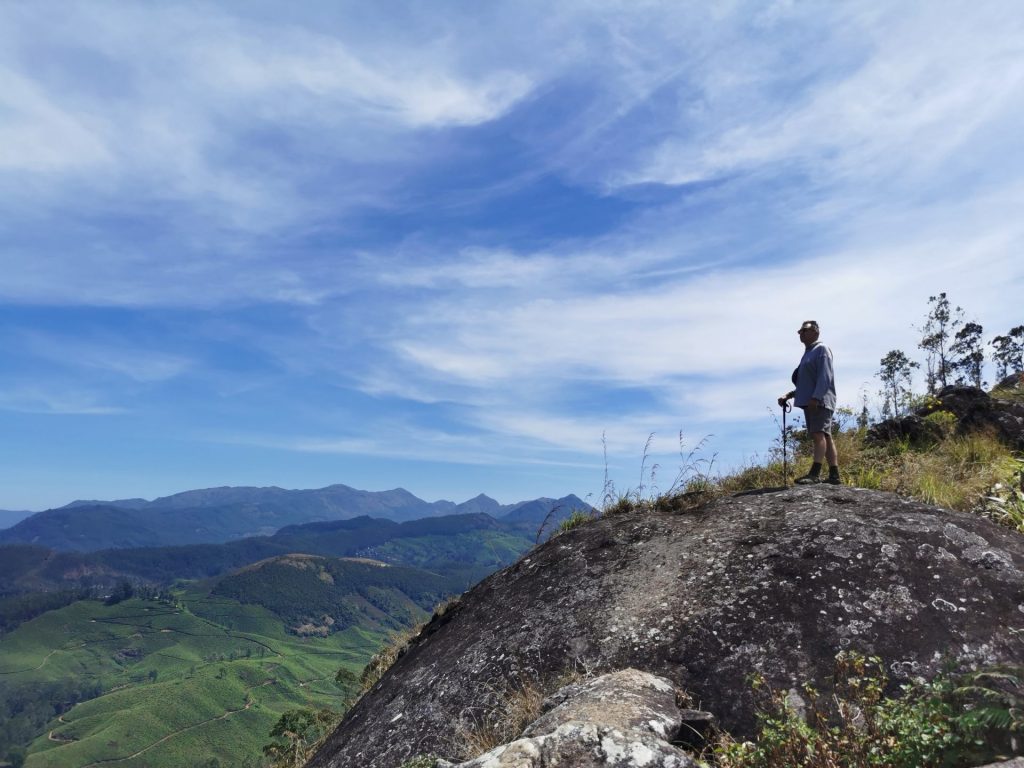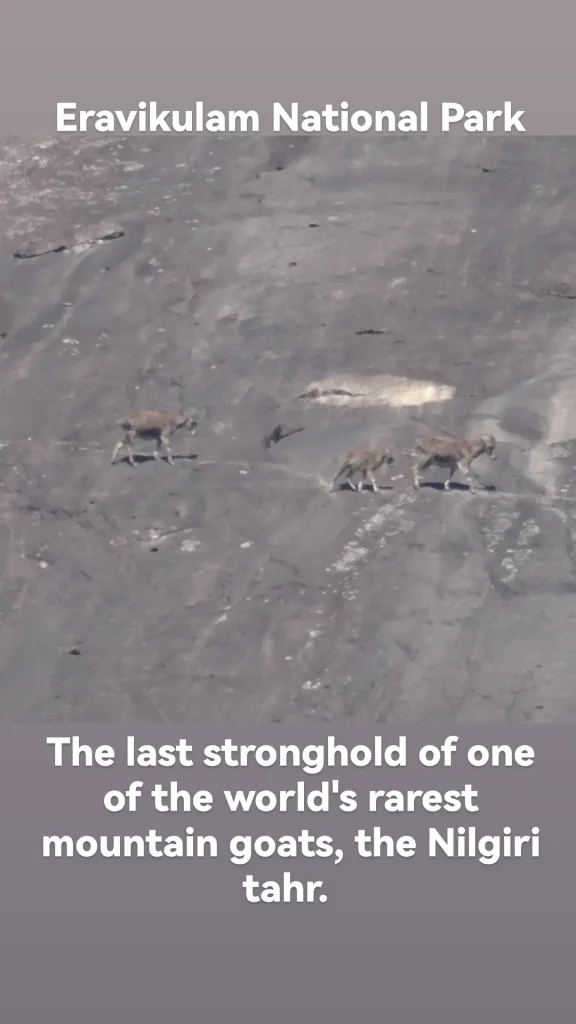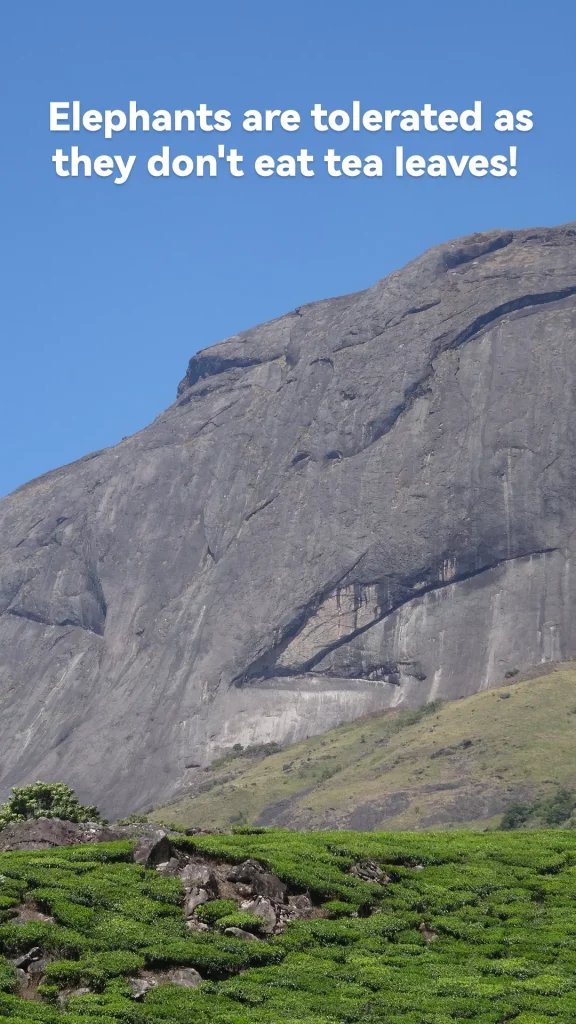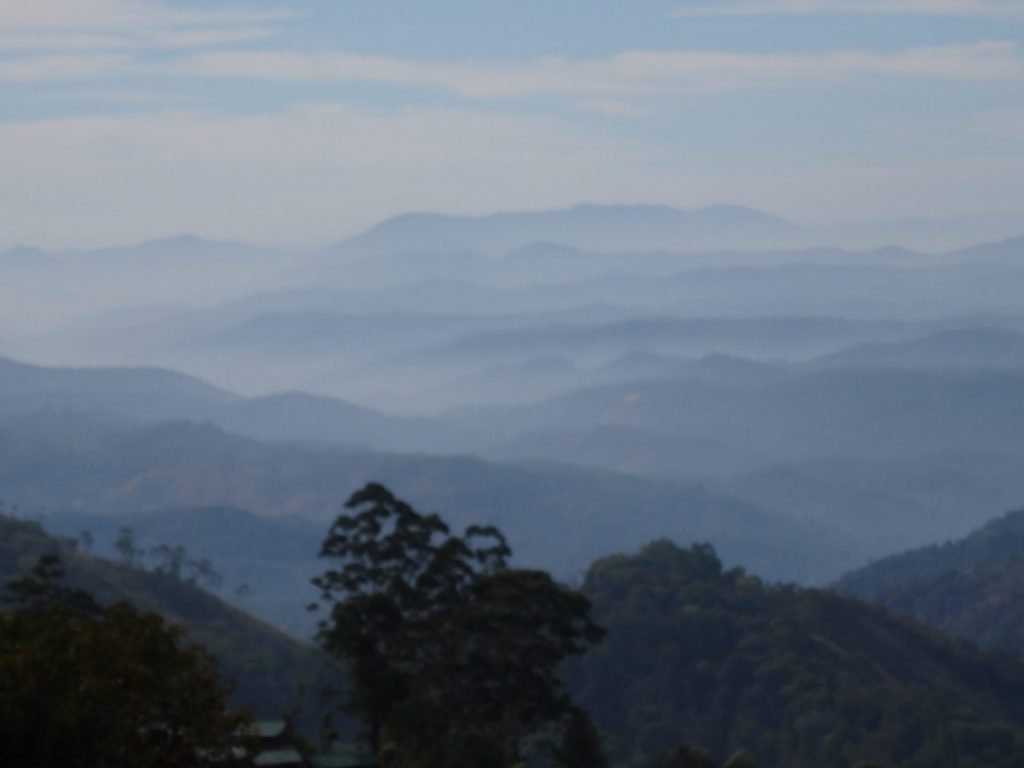We’re feeling lazy after our day by the pool in Fort Kochi and gone for the easy option of an air conditioned taxi to take us to Munnar Hill Station. I like our young driver, Ajeesh. He speaks English well, he’s chatty and informative and critically, he’s not a deranged driver. It’s cooler in the hills of Munnar Hill Station, which lies in a green bowl of tea plantations, rimmed by mountains – including Anaimudi (8,841 ft), the highest peak in India south of the Himalayas. We’re staying in a bed and breakfast outside the town, overlooking the river valley, from which we walk seven miles through and above the tea gardens to a small summit sometimes frequented by wild elephants. Elephants are tolerated amongst the tea bushes, mainly because they don’t eat them. We’ve been informed that the corporate owner of the tea plantations, Tata, is considering prohibiting lone walkers from trekking through their tea gardens to reach the hill summits. They say that hikers leave rubbish. This is nonsense – unlike most of India there’s no trash up here. They will insist that walkers are accompanied by a guide – for which they will of course charge a fee. Is their enthusiasm for control and bureaucracy the real reason? Or perhaps it’s a job creation scheme.
It’s a fine walk to the hilltops. With plenty of forest around Munnar it’s a great habitat for elephants. There’s some elephant dung on a massive flat boulder but no elephants in sight. It is remarkable that in a country as densely populated as India, there are places where an animal as big as the elephant can live, in sustainable numbers, in the wild. There’s a water hole about 40 km from here, visited by elephants every day. We’ll go on Friday. But tomorrow it’s goats!

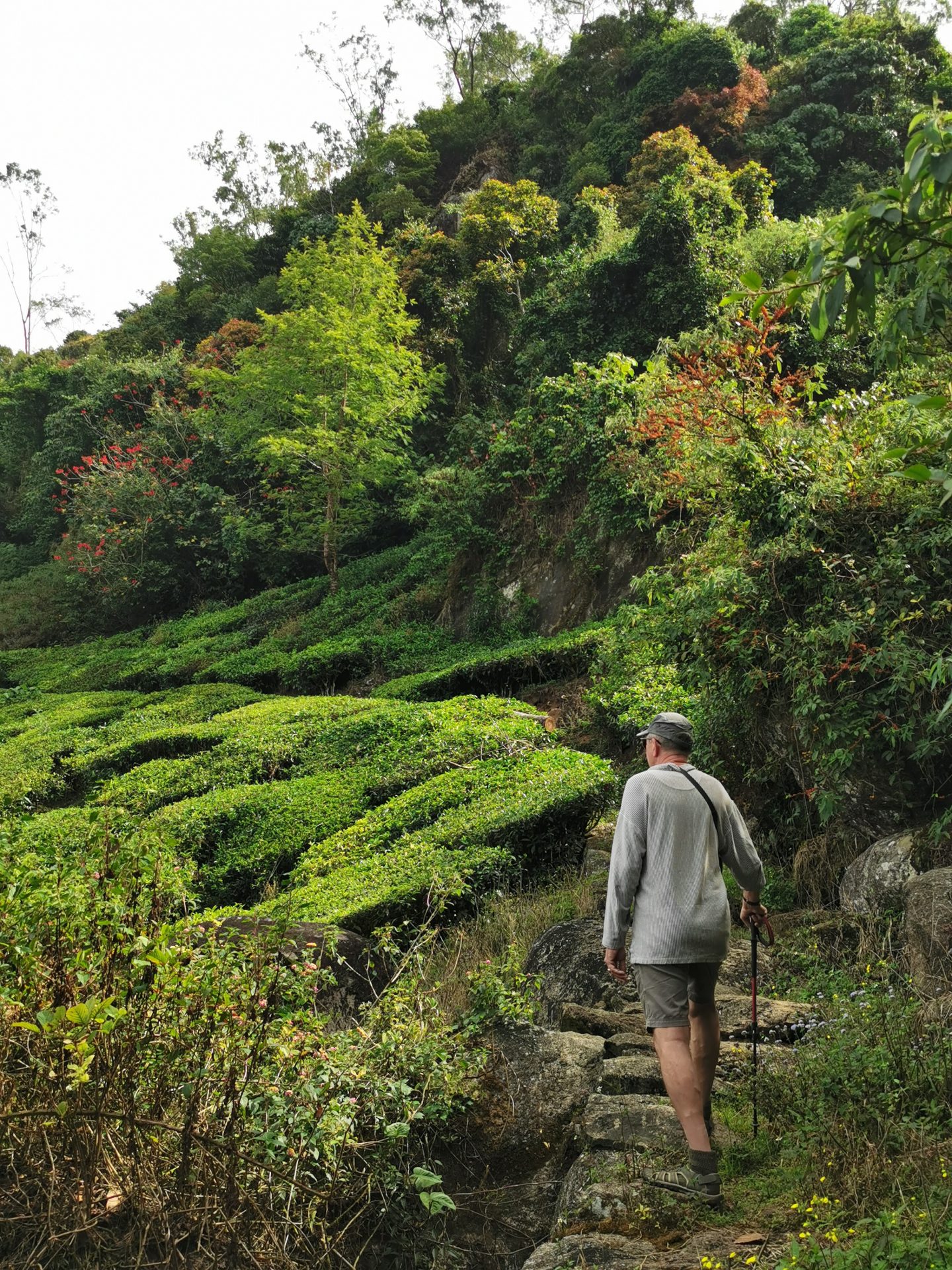
Our cheerful residency host Kanivatch (a Tamil name) can be very amusing. ‘We used to have a railway line from Kochi to Munnar,’ he says, ‘built by you British. But it was washed away in a flood in 1921 and you never fixed it.’ Today he arranges for an auto rickshaw to take us on the thirty minute drive to Eravikulam National Park to take a look at the friendly and inquisitive Nilgiri tahrs – one of the world’s rarest mountain goats.
It might just be my mood but my response today to the frustrations of Indian encounters is not positive. After half an hour, mostly on an unmade road, the rickshaw driver pulls into the entrance of a tea museum. “We don’t want to visit a tea museum.’ I tell him. ‘Look – buy tickets there,’ he says. ‘No we want to see goats at Eravikulam.’ ‘No this is tea museum.’ he insists. ‘I know it’s a sodding tea museum. We want goats.’ Jo shows him the National Park on her phone. He makes a phone call to Kanivatch then fires up the rickshaw for another 40 minute drive back to Eravikulam. When we arrive, there’s a sign declaring ‘Breeding season. Park closed. Open 1st April.’ I’m wondering why nobody told us this. But for R500 (£5) each, not one, but two guides will take us on a 4km walk to a waterfall. ‘Will we see goats?’ I ask. A guide shakes his head and says ‘maybe yes.’

The innate friendliness of the Nilgiri tahr made them pathetically easy prey during the hunting frenzy of the colonial era. On a break during his battle campaign against Tipu Sultan in the late 1790s, the future Duke of Wellington reported that his troops were able to shoot the unsuspecting goats as they wandered through his camp. By Independence in 1947 they were virtually extinct but their numbers have recovered. We were hoping for some close encounters. Our two guides are virtually silent during our walk – clearly bored and disinterested in us and their surroundings. We climb up through the trees alongside a stream. ‘Do you have any interesting birds in the forest?’ asks Jo. ‘Yes’ replies the shorter moustachioed guide. He doesn’t elaborate as he doesn’t seem to have a clue about the birds. This just pisses me off. Why be a guide or why employ somebody as a guide who doesn’t have the slightest interest in the countryside, or is just too lazy to inform themselves about it?
We emerge from the forest in front of a huge rock down which cascades a thin waterfall. I spot some movement high up on the cliff. Through my binoculars I see five Nilgiri tahrs walking along the rock face. They are big horned animals the same colour as the rock. I point them out to Jo who sees them, and to our ‘guides’ who can’t. We walk on towards a truck that will take us back to the Park entrance. One of the guides gets a little credit for spotting a tahr on the rocks that I can’t see. We meet a couple from Cork, Ireland who have been living in Chennai for five months. The woman is feeling unwell and they’re resting whilst the rest of their group and guide visit the waterfall – we just passed them. The moustachioed guide reveals his true role in life. ‘Where is your ticket?’ he asks. The Irish guy proffers his ticket and explains the situation. The official closely examines it and says it’s ok. Back at the entrance Jo tips the guides. God knows why.
We ask the rickshaw driver to stop in Munnar for fruit, tea, whisky and beer (a fantastic shopping list). He stops at another grim, caged bottle shop. I buy three extra strength Kingfisher beers (there are about half a dozen different varieties of Kingfisher beer but most of them are identical 5%-6% strength lager beer). And I finally track down 8pm blended Indian whisky, the online reviews of which are gushing. At a Ripple tea shop Jo buys tins of white and black tea and a tea strainer.
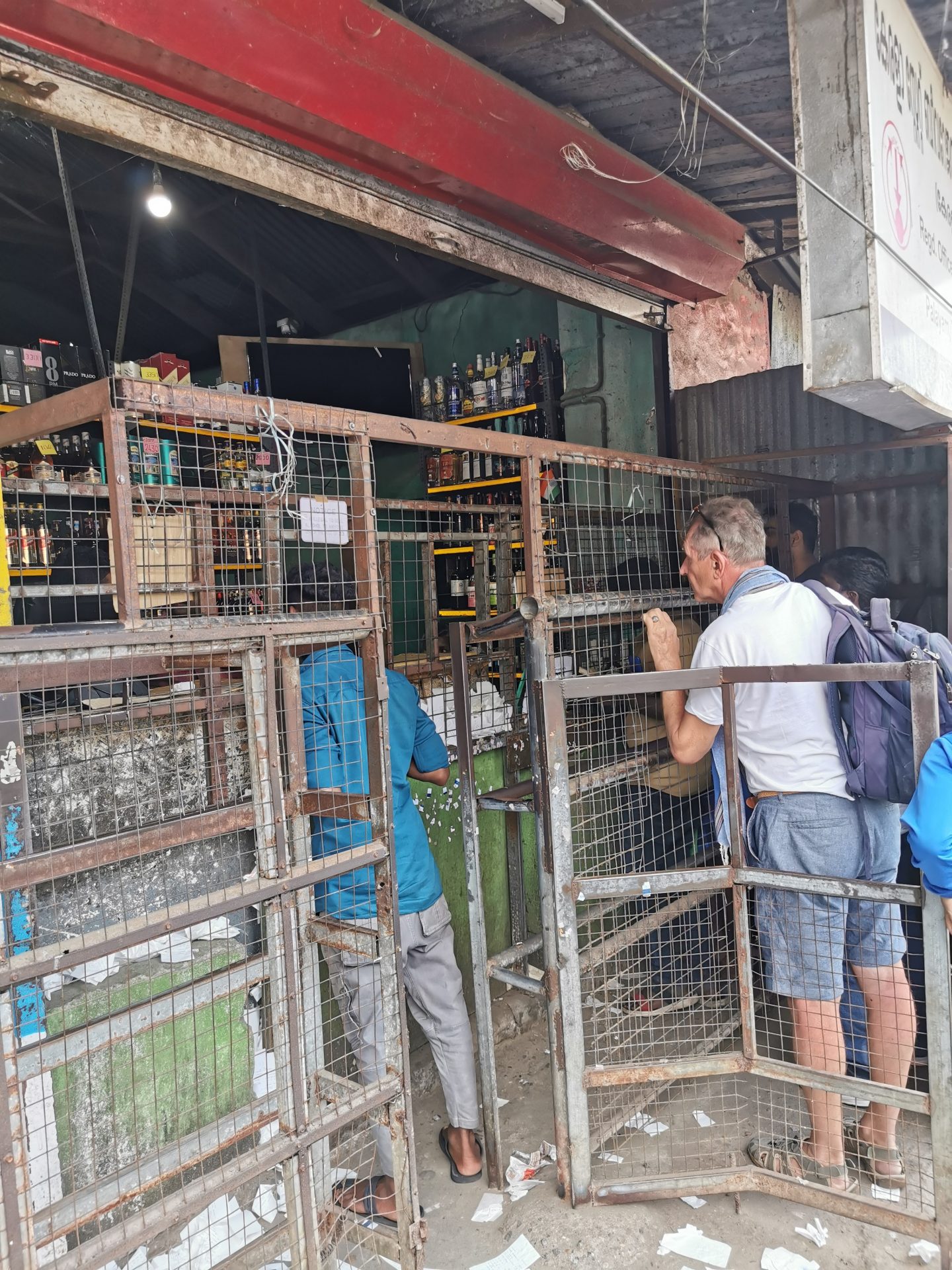
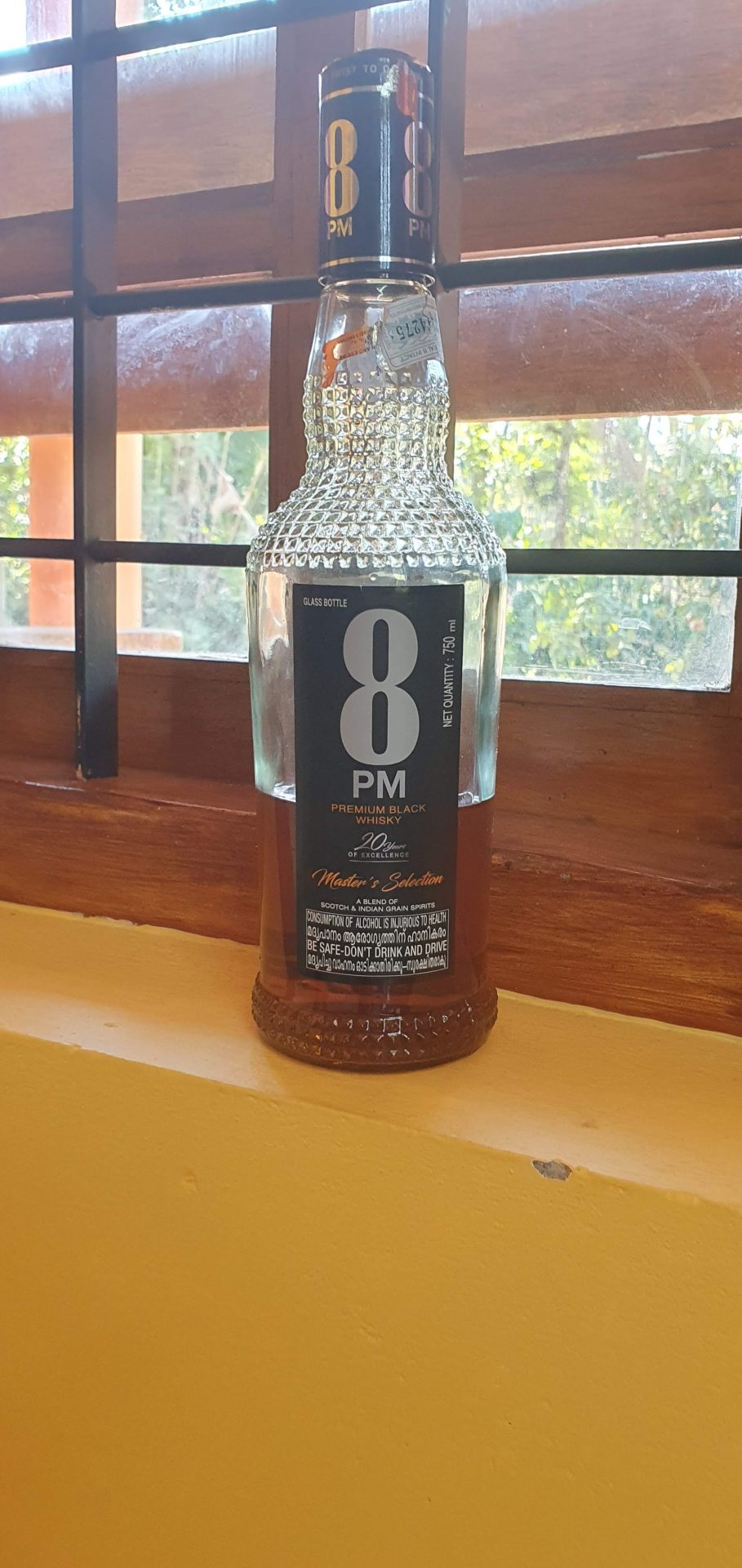
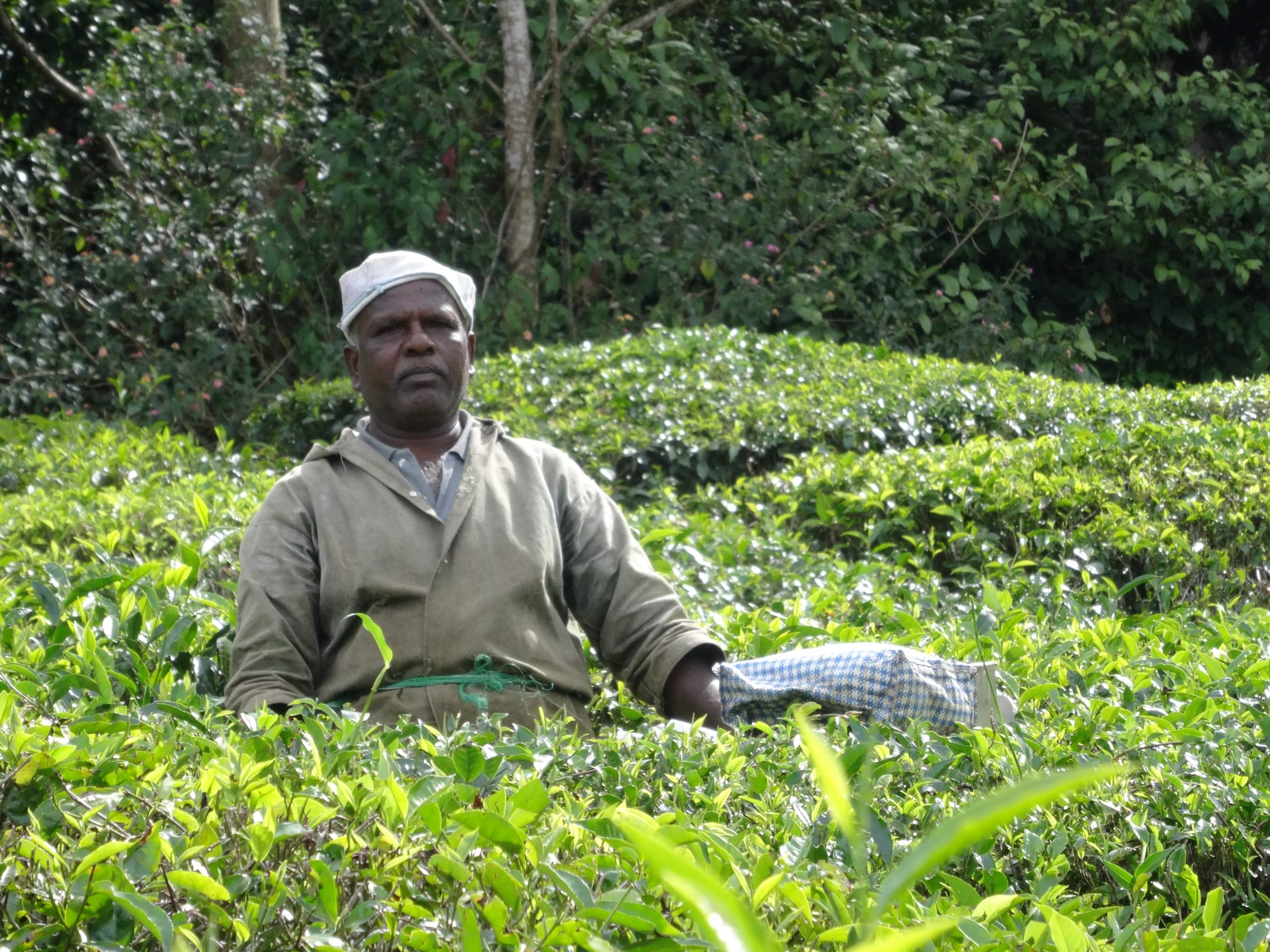

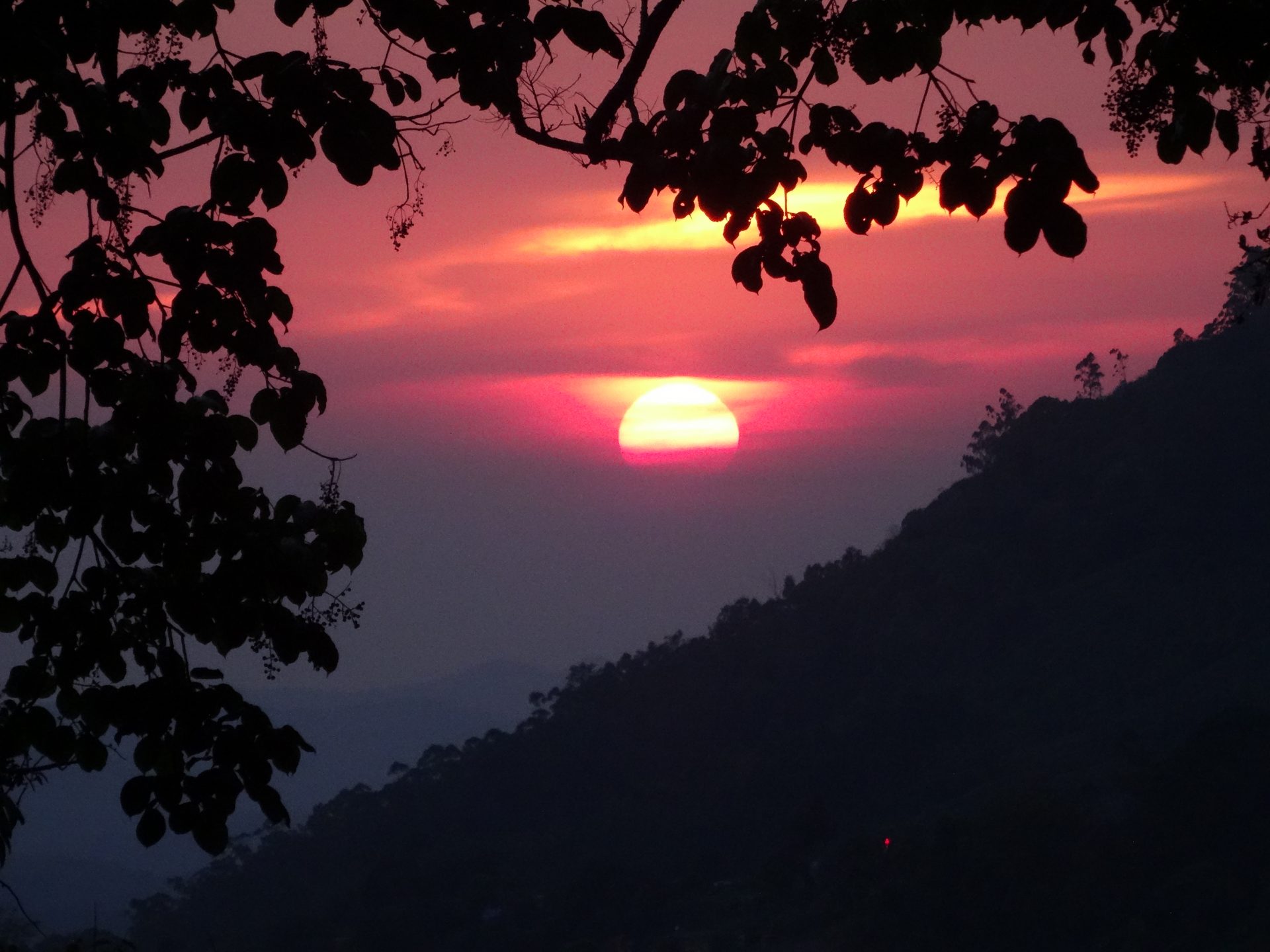
A few hundred metres along the road from our residence,Tea Dale Homestay (we’re maintaining the Dales connection), is a little shack selling very good homemade chocolates, and a viewpoint overlooking the hills and tea gardens. On the other side of the road is another tin shack called Shiva Tea Point. We visit Shiva a couple of times for cups of good strong tea and his mum’s homemade carrot cake (the business – moist and carroty). Shiva is an affable young guy who asks if I’ve been to India before. I was last here in 1987 and I tell him that I was in India before he was in India. He laughs.
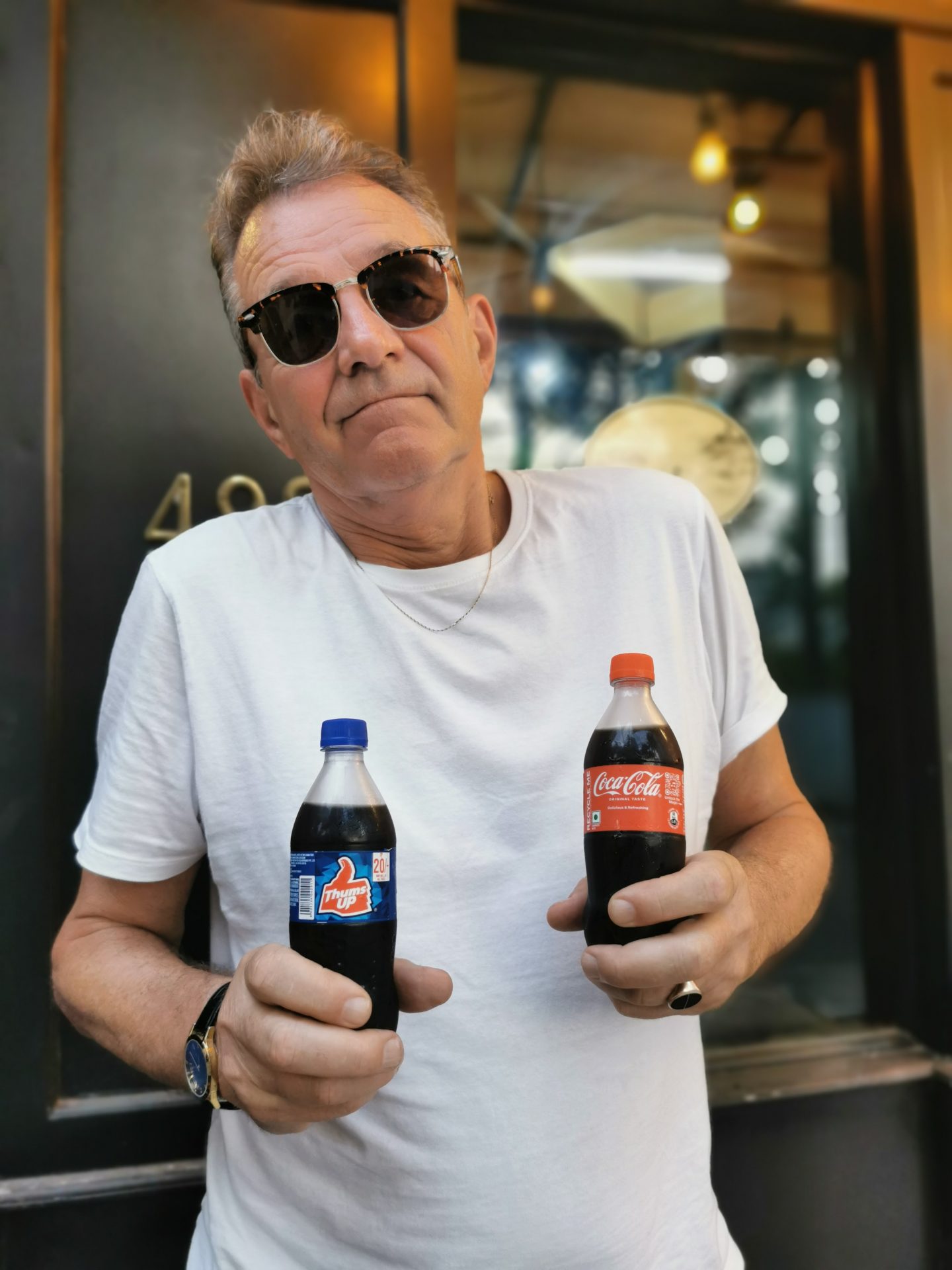
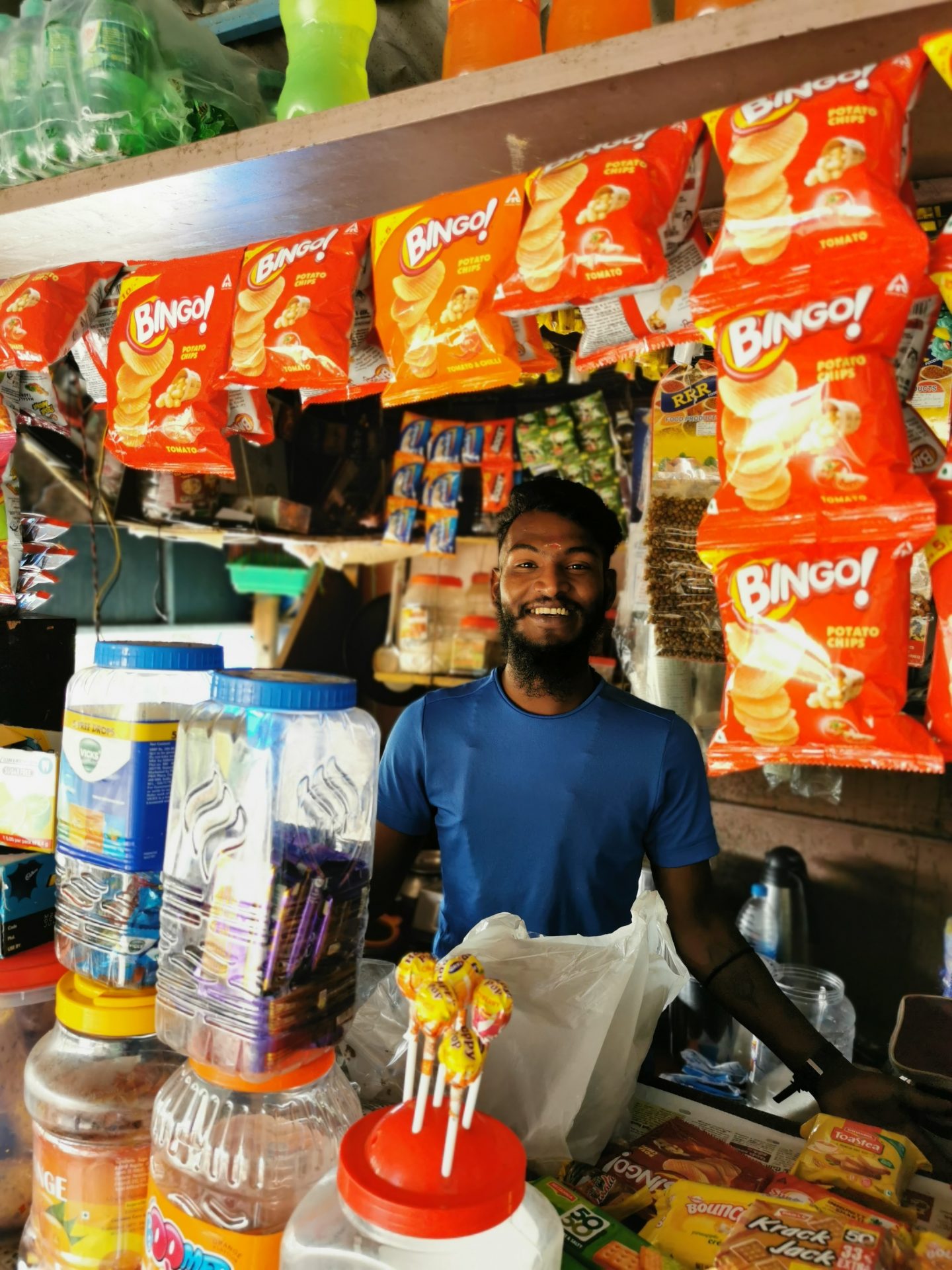
Kanivatch drives us the two hour trip to Analkulum, a water hole containing alluvial salts, popular with elephants living in the immense adjoining forest. With us on this outing are Noel and Laura from Donegal, Ireland, with whom we shared our 8PM whisky last night. On the way we stop at a decent waterfall – the decent feature being the possibility to swim in the pool below. I was tired this morning and the freezing cold cascade of water under the waterfall revives me. We arrive at Analkulum at 3pm. It’s a small village with a few shops next to a green patch of ground with a volleyball net. 25 metres away from the water hole. It’s a pleasant enough place to while away a few hours – there are many kingfishers and the usual array of egrets. We’re sitting in the shade of a tree, quite close to the water when a self appointed master of ceremonies encourages us to retreat and sit on a low wall at the edge of the field, by the road. It’s ok here but there’s no shade and it’s very hot. Elephants visit most days. Kanivatch reckons we have a 90% chance of seeing some. After two hours, at 5pm, Jo says that they will turn up at 6.35. I’m damned when at 6.34 a female and her young calf descend slowly out of the forest into the middle of the pond. Jo is delighted because she’s seeing wild elephants and because Kanivatch is mighty impressed by her prediction. Both mother and calf are very relaxed about the nearby crowd of sometimes noisy onlookers – I guess they’re used to it. It’s a pleasure to watch them for 45 minutes drinking and playing (blowing bubbles!) in the cool water.
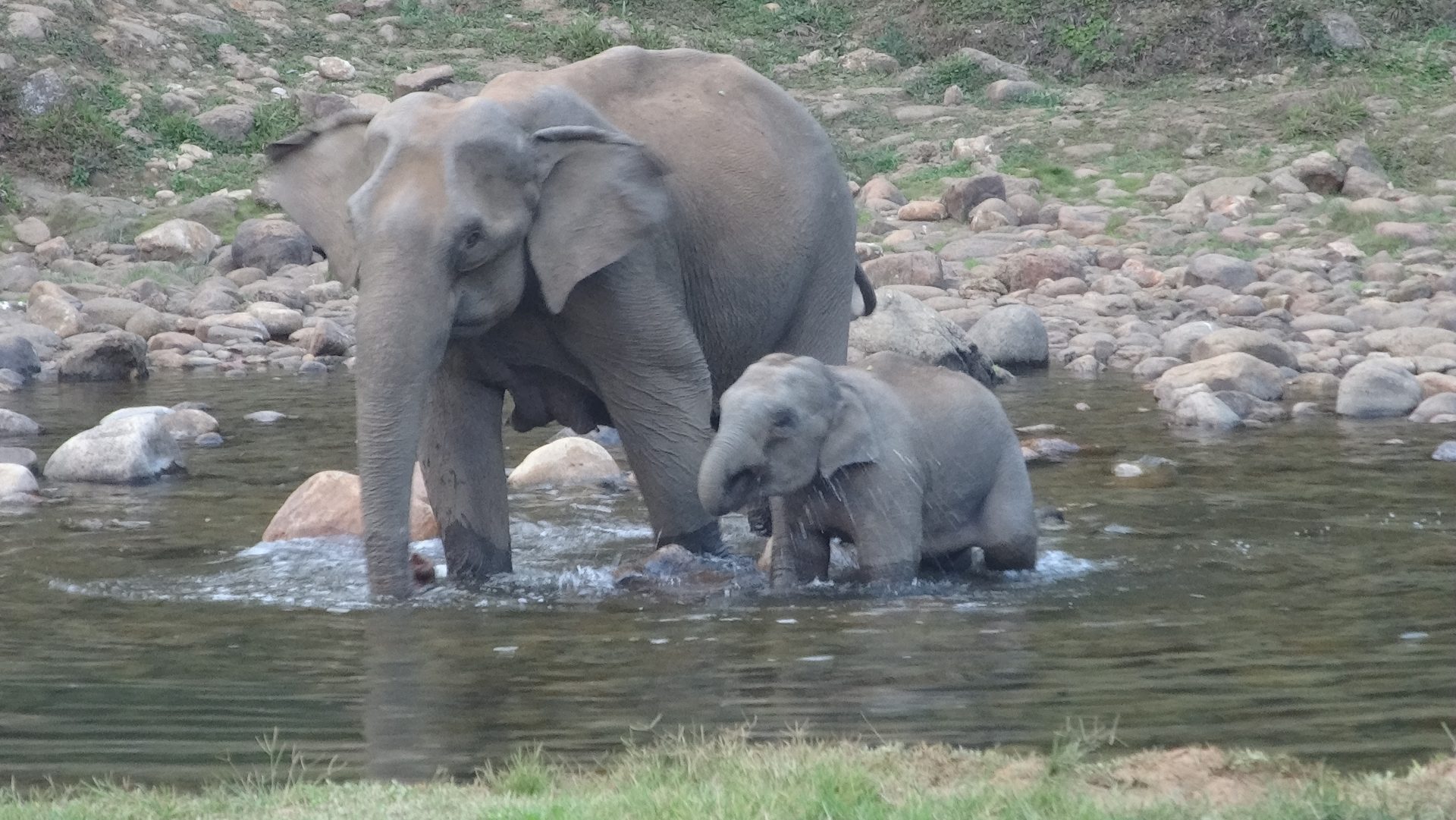
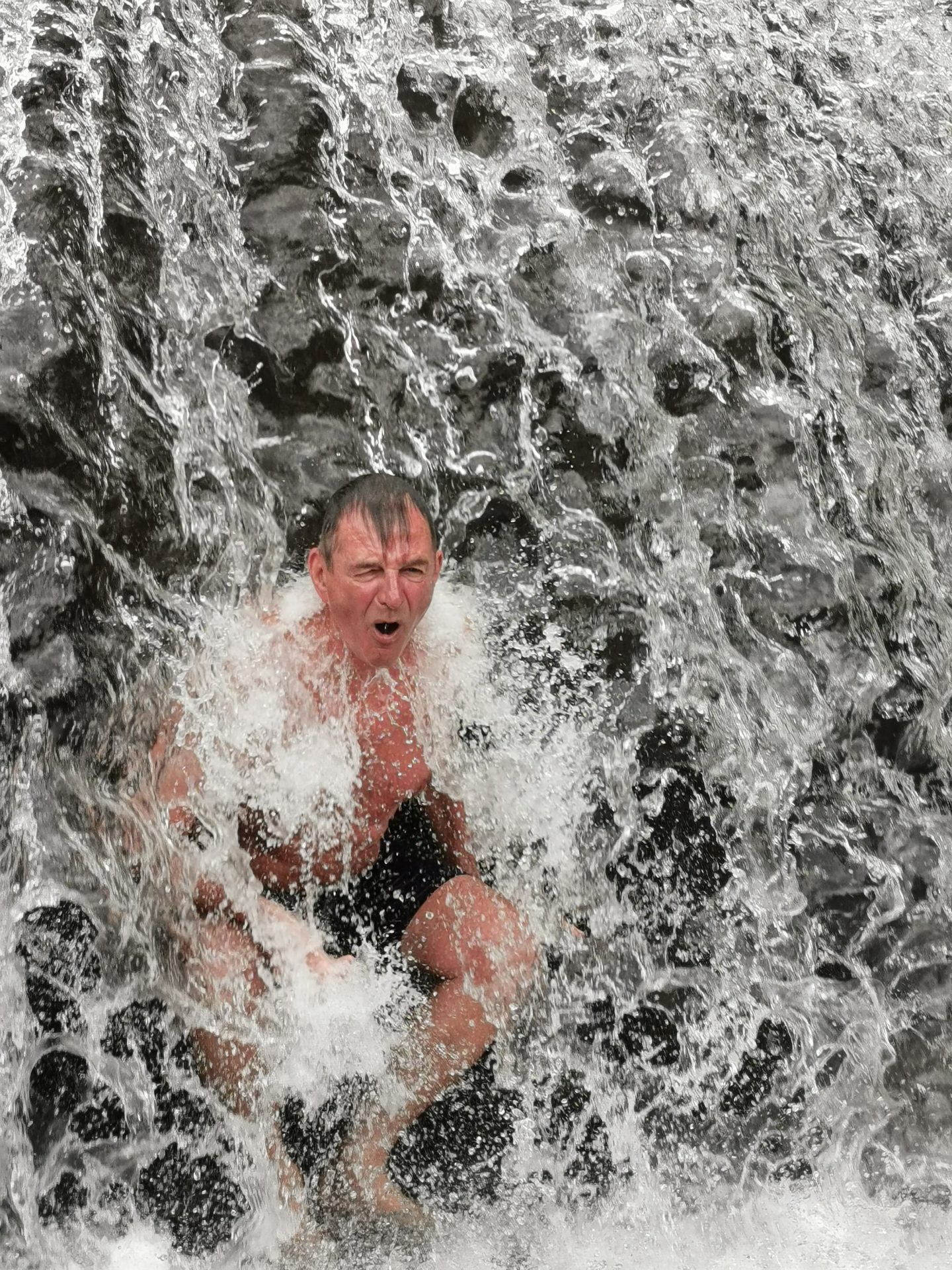
On the drive back in the dusk we take an alternative, slightly longer route. ‘Elephants use that narrow road in the dark.’ says Kanivatch. ‘We’ll go this way.’ Laura asks if we can stop in Munnar for beers and whisky. Kanavitch says that after witnessing last night’s session he’s ordered in beers for us but but no whisky. ‘Can we stop for whisky?’ asks Laura. She likes a whisky does Laura. She’s a doctor in Northern Ireland and I was delighted when, last night, she affirmed the resilience of the human liver. ‘Not good to go to the bottle store now.’ says Kanivatch, ‘Long queues, maybe fifty people. I’ll get rickshaw driver to buy and deliver.’ I’m impressed – Deliverbooze or Just Drink. He calls a rickshaw man after which I ask him if it’s all set up. ‘No, rickshaw driver is already drunk.’ He tries another and an hour later calls again to confirm that it’s been delivered.
We’re sharing a bottle of 8PM at a table in the terrace restaurant when Kanivatch turns up with my laundry. .I sent two pairs of shorts and a T-shirt to the dhobi yesterday. The dhobi wallah returned three items this evening wrapped in newspaper – one pair of shorts and an additional T- shirt that’s not mine. Kanivatch says he’ll sort it.
We’ve booked Ajeesh, the young taxi driver who drove us the four hour trip up here, to drive us back to Kochin tomorrow. He’s been texting Jo, keen for our business. He drove up last night and stayed over with his brother so that he can drive us back early this morning. First stop is a rendezvous with a motorbike in a lay-by to get my laundered shorts. Noel has been telling us about toddy, a 5% Keralan hooch distilled from palm oil (we also had a chat about Irish pochin and we’ve agreed to meet in Ireland later in the year for a ‘wee drop’.) There are toddy shops lining the route back to Kochin and Ajeesh reckons he knows of a reputable one. Before we leave the hills he pulls over and we enter a dark cool room full of men with that look of hostility shown by peasants in remote places to unexpected strangers. I say ‘good morning’ to a toddy drinker and he glowers at me. We sample a couple of glasses of white, frothy, slightly effervescent toddy. It tastes a little like yogurt. Jo takes photos – nobody smiles. I order just half a litre and Mr Toddy fishes a plastic bottle out of a bin, smells it, and rinses it in tap water. He fills it with toddy and screws on the cap. It doesn’t fit so he chucks it on the floor and uses another out of the bin. I must be crazy to drink this stuff.
Back on the coast in downtown Ernakulam, near the train station, we book into a dodgy $11 a night room, in what feels like the equivalent of a DSS hostel, a previous disgruntled resident having punched a serious dent in our bedroom door.
We visit the Kerala folklore museum – a fine wooden building stuffed to the rafters with ancient artefacts, some of them reputed to be several thousand years old. There are folded palm scrolls that look like they could be pre Christian.
At a nearby beauticians Jo has her feet massaged and her toes painted an alluring blue colour (I like them). After dinner, back in the DSS bedsit we chase around the bedroom failing to kill a solitary elusive mosquito. I sleep soundly on a very hard but still comfortable bed.

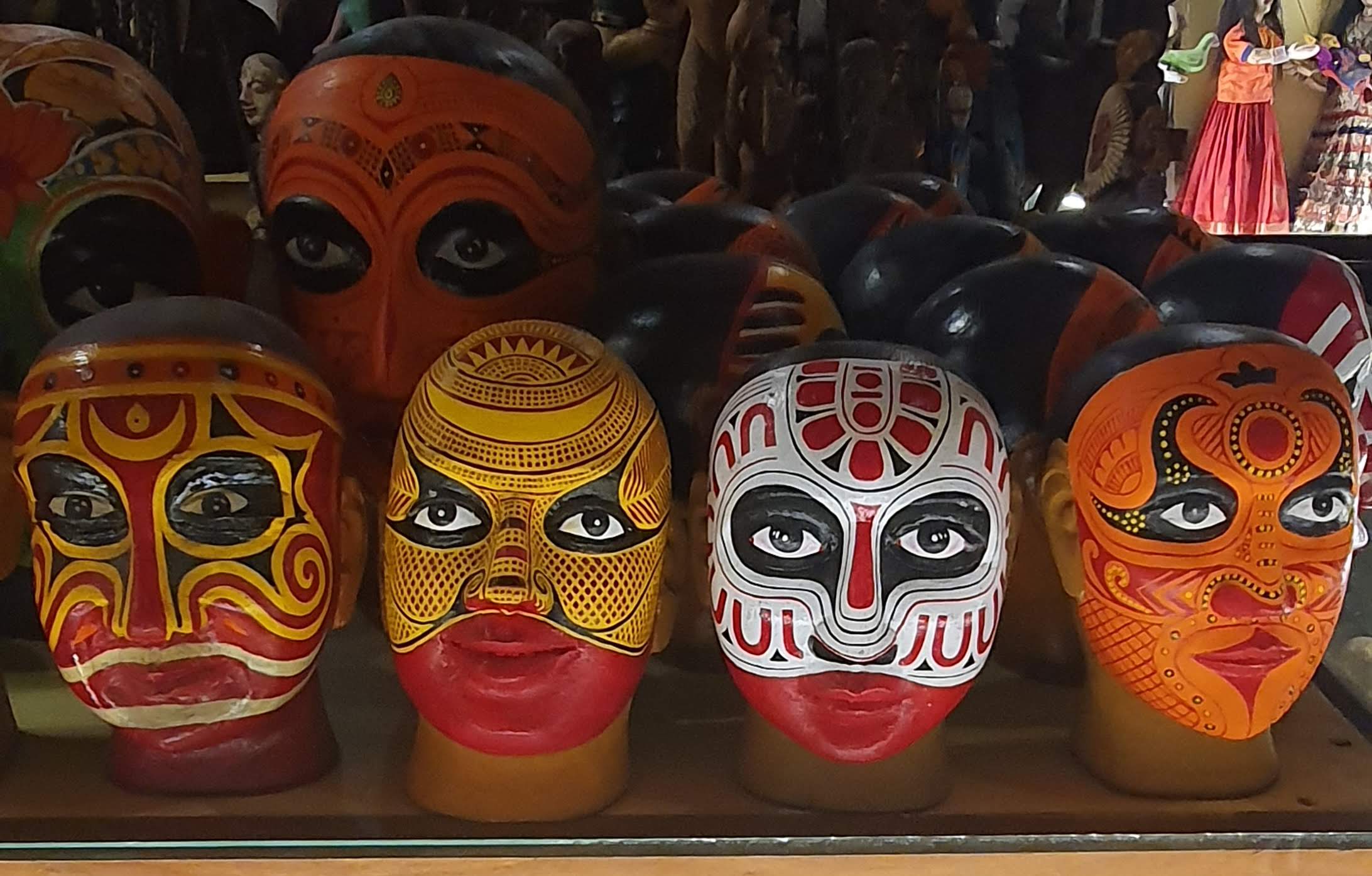
We are up at 6.30am and miss breakfast – no great hardship as it’s only tea and biscuits. Jo wanders down the road to find a rickshaw and, as the lift is inoperable, I lug all the bags down three flights of stairs. We keep saying we have too much luggage: two medium sized suitcases, a small backpack, a holdall, a handbag and a hessian bag Jo acquired at the sari shop in Trivandrum. Oh, and a loose jacket that won’t fit into any luggage. The rule is: you’ve got too much stuff if there’s stuff you don’t use but I’m using everything! I am the rickshaw loadmaster as I’ve figured out how to load all our bags into the back of a standard sized rickshaw (they come in different sizes) leaving just enough room for Jo and I to squeeze in next to them. Sometimes a driver will attempt the loading but I’ll have none of it.
At Ernakulam Junction railway station we buy two 2nd class non AC tickets for the five hour journey north on the 9.17am train to Kozhikode – 75p each. Indian poverty is infamous – a third of all the children in the world who live in extreme poverty, live in India. But to some extent real poverty is relative to the opportunity to purchase. This train carries about 4,000 passengers in twenty carriages. The first eight carriages are 2nd class non AC. Many of the passengers are poor but with the incredibly cheap rail fares, they can afford to travel. In the UK, poor people cannot travel anywhere. A five hour train journey in England would cost well over £100. (Postscript: But the railway network can be a dangerously neglected infrastructure. In June 2023 in Odisha eastern India a train crash will kill over 280 people and injure over 1,000. The worst train crash in Indian history.)
The train pulls in on time and there’s a fantastic scrum to board it. Indian women may look feeble but they have the upper body strength of an elite athlete and morph into rugby prop forwards to board a train. Once again Jo goes ahead to find a seat and I deal with the bags which I stack by the toilets. My place is by the open door. With a blast of the train’s horn (the driver loves that horn and will use it enthusiastically at every station, unscheduled stop, level crossing and bullock on the journey) I stand at the door for a couple of hours watching Saturday morning Indian life pass before me. A tall rigidly upright man, dressed in the purest white robes of an orthodox Brahman, standing stock still by an isolated stand of palm trees – watching me. Women in sweeping brightly coloured saris preparing breakfast outside small brick houses just a few feet from the railway. Rivers and lakes of the Keralan backwaters shadowed by flocks of wildfowl. The train stops on an isolated stretch of line and two men jump off and walk across the tracks. An unscheduled stop? No, they’re drivers for the engine parked on a siding opposite. The train crosses a bridge over a lake and I look down. There’s nothing between me and the water 100 feet below. I film a short video of this which now induces vertigo when I look at it. The train pulls slowly into a station which rouses itself from hot slumber to a frenzy: porters, beggars, vendors of tea, coffee, chapatis, biryani curries, newspapers, children’s comics shouting out their wares. Unforgettable scenes. At each station there are more passengers for an already overloaded train. There’s an efficient looking website (IRCTC) that sells railway tickets and claims to know the number of remaining seats available on each train, by class. The numbers are made up.
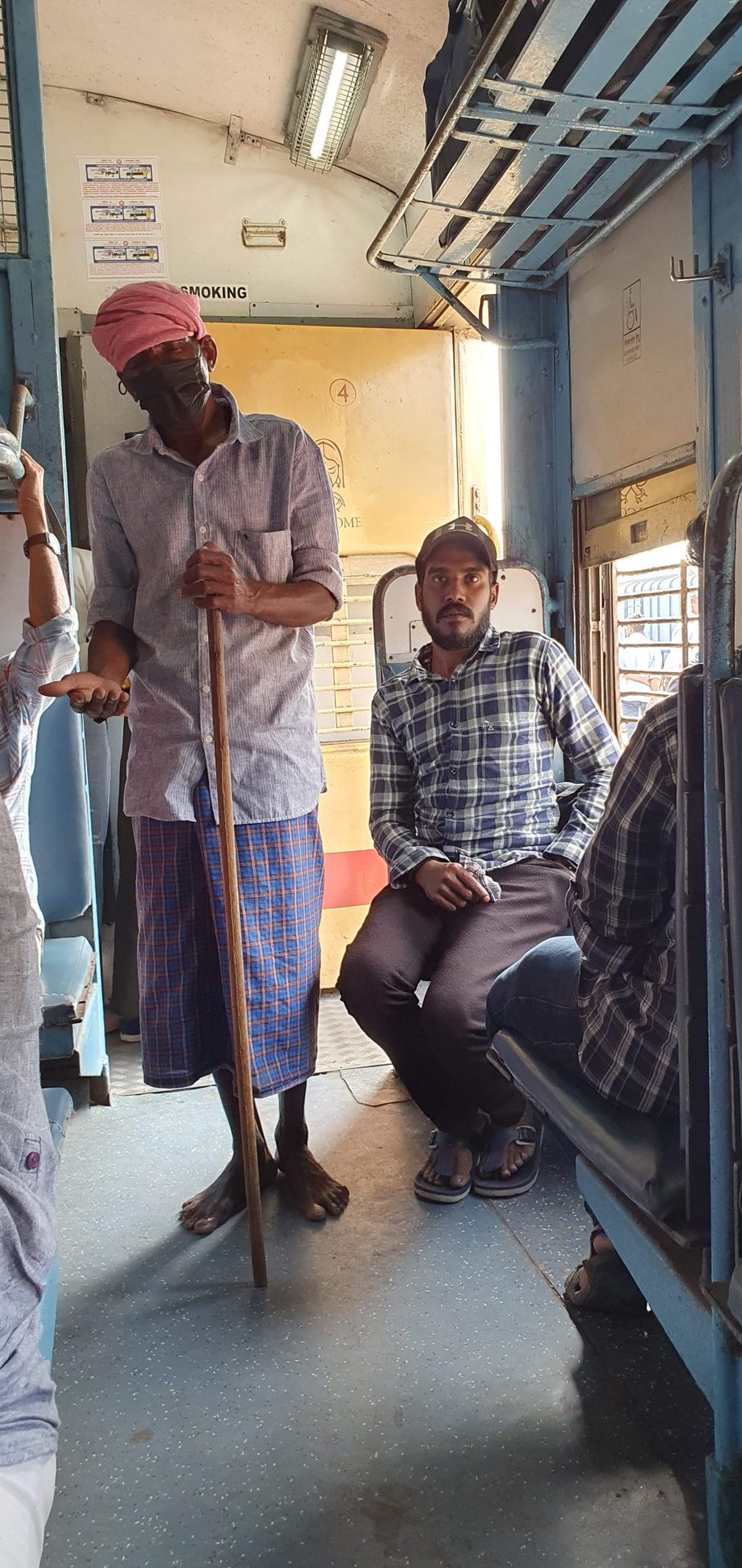
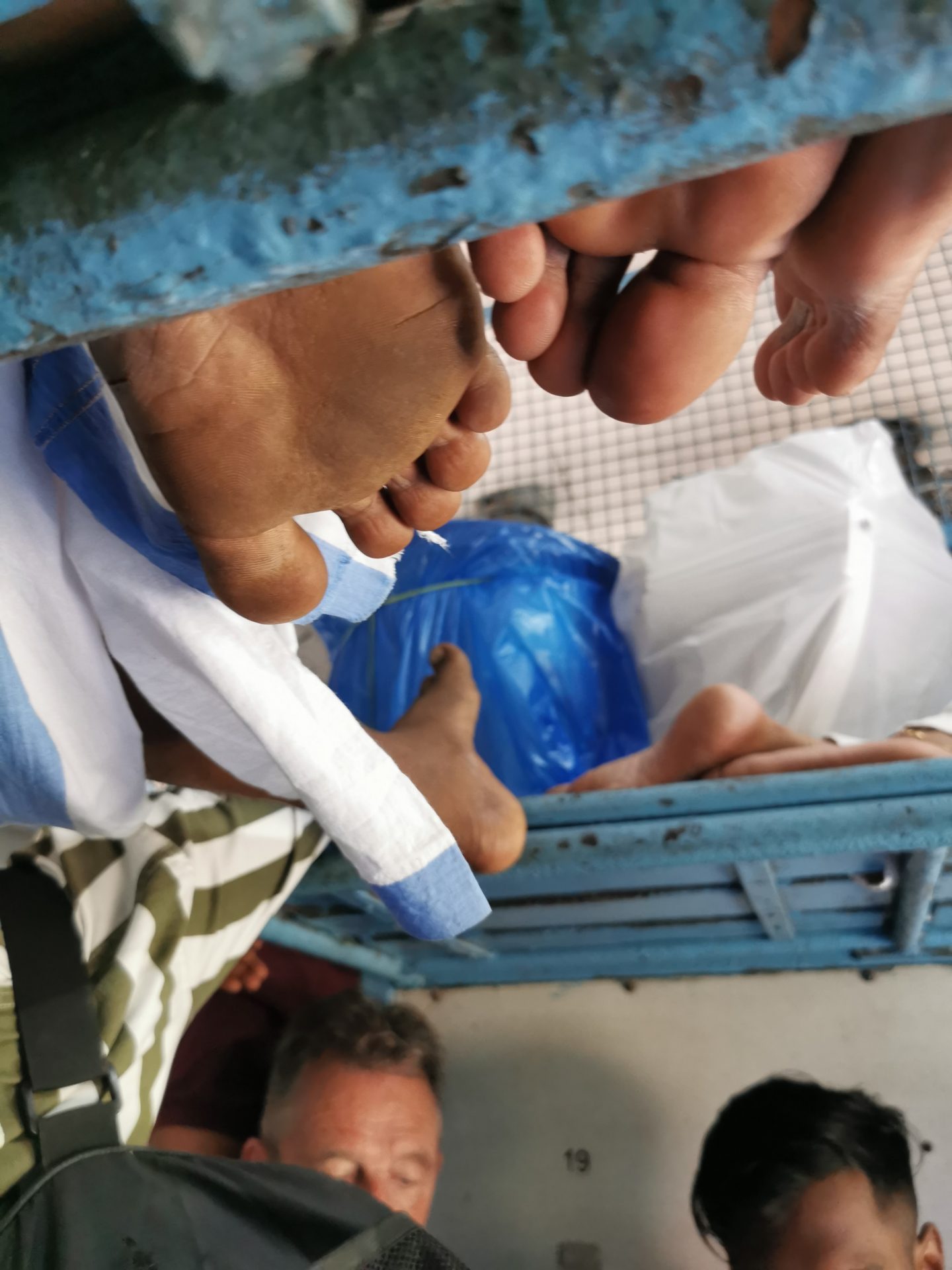
I occasionally muscle my way towards the toilet to check on our bags. Then I’m back at the open door. I do a quick inventory of our bags. Where’s my jacket? I call over to Jo and mouth ‘jacket’. She shrugs. I recall putting it on the platform bench at Ernakulam Junction. That’s the last time I saw it – that’s the last time I’ll ever see it. Fortunately there was nothing of importance in the pockets. It’s a shame. I really liked that stylish light summer jacket. and it cost me £7 from Age Concern in Ripon, North Yorkshire. I’ve been thinking about buying an Indian Nehru style jacket. Maybe this loss will motivate me.
For the next stage of our Indian journey please visit Kozhikode and the Wayanad District of Kerala State.

